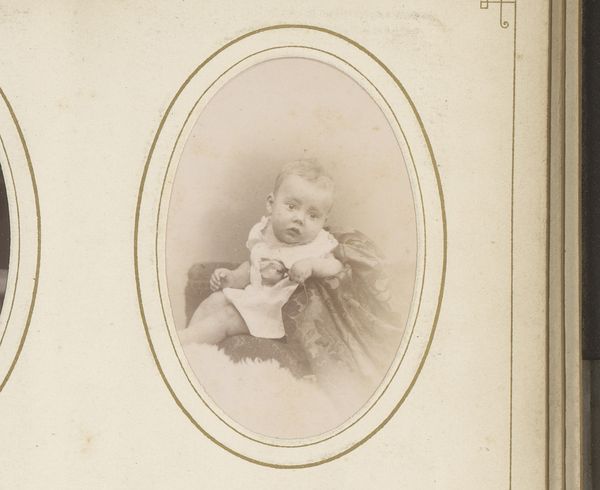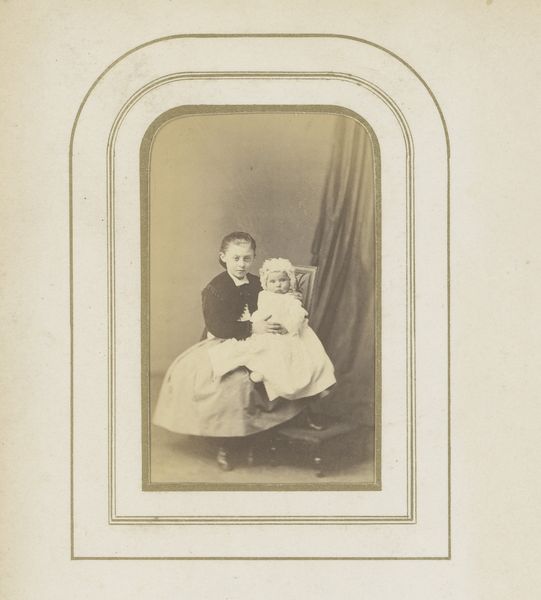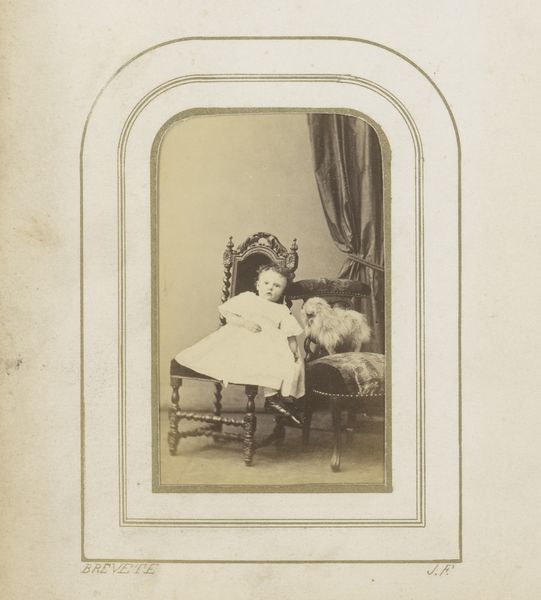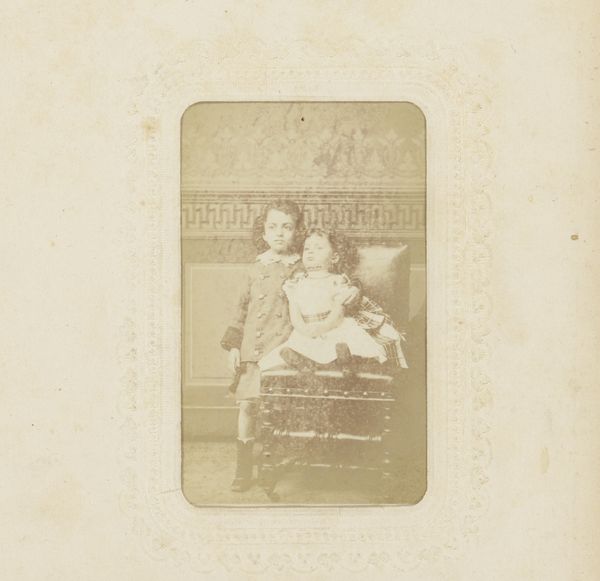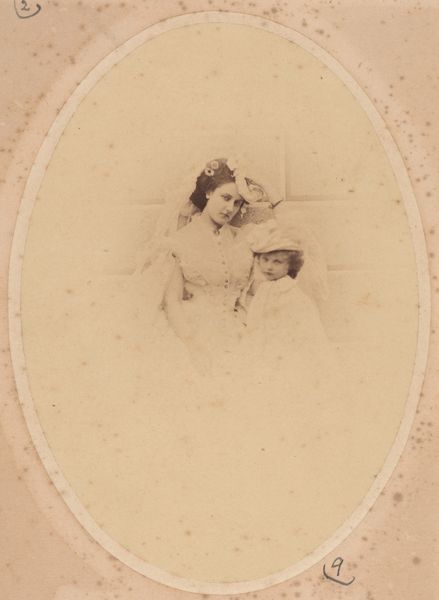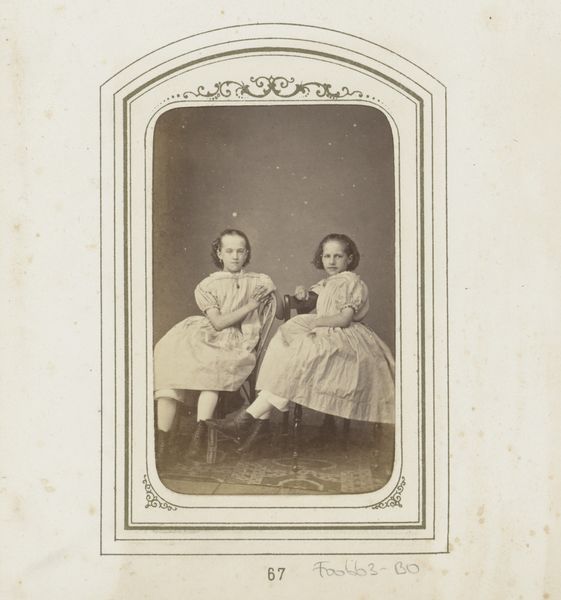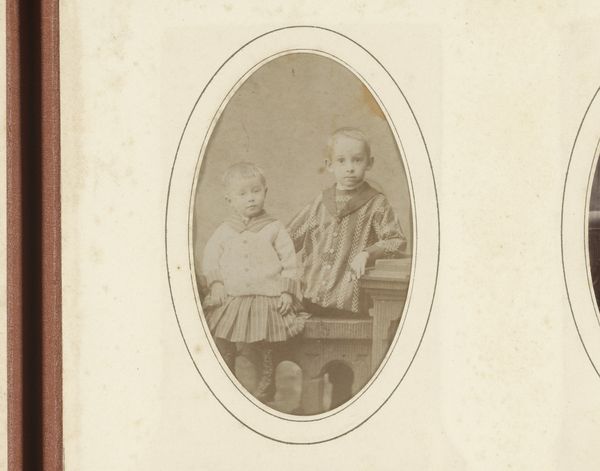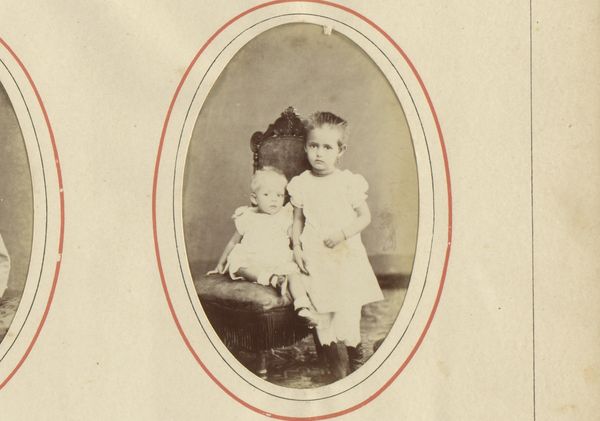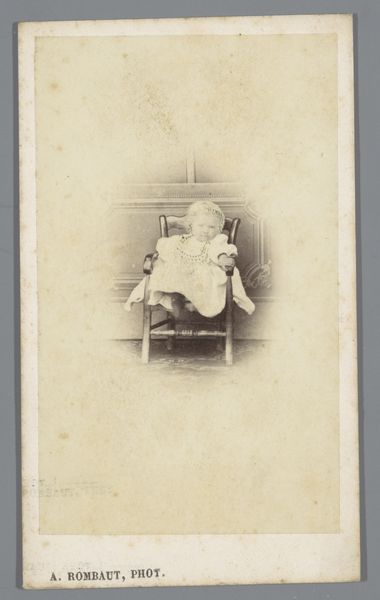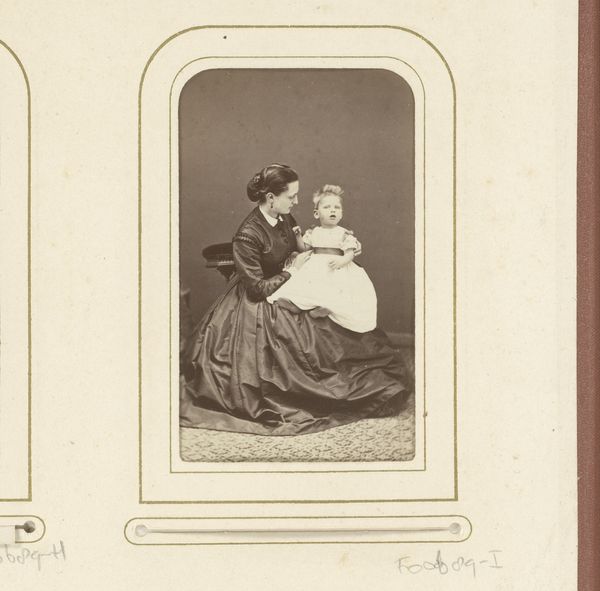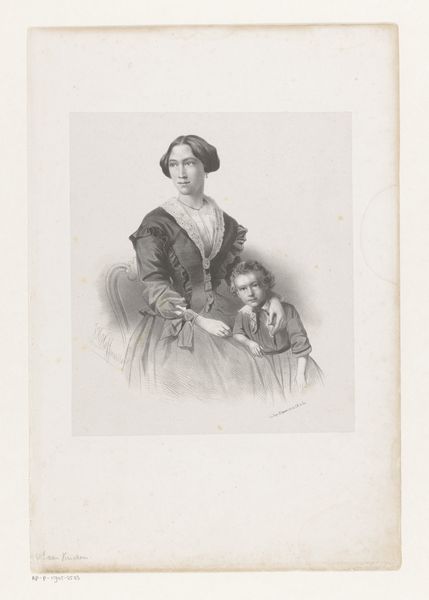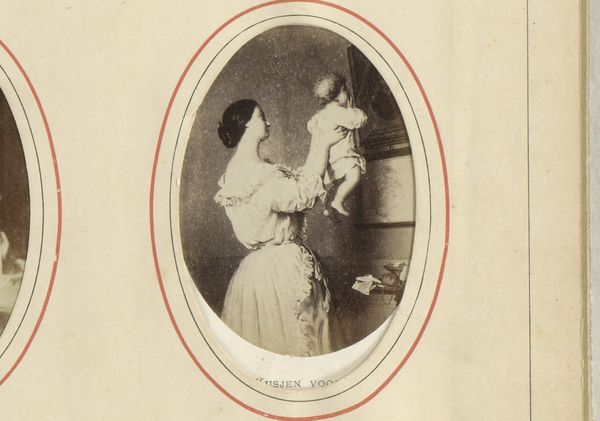
Dimensions: height 82 mm, width 56 mm
Copyright: Rijks Museum: Open Domain
Curator: Here we see “Portret van twee meisjes,” or "Portrait of two girls" a photographic work, tentatively dated to 1904 and attributed to J. & J. Schotel Szn. Editor: The photograph's oval frame immediately conjures a Victorian mood. It feels restrained, almost melancholic, in its subdued tones. Curator: Precisely! Consider the cultural coding here. Photography, then a relatively new medium, was embraced for portraiture but its use solidified notions of idealised childhood, captured and preserved. Do you see any specific imagery that stands out to you? Editor: Well, the girl clutching a doll certainly points to notions of innocence, but it also makes me consider the performative aspect of girlhood in this era, the enforced expectation of domesticity through toys like this. Curator: Yes, dolls often appear and are symbolic stand-ins for future motherhood or miniature representations of feminine social roles. Also, the slight formality of their attire, even in what looks to be an informal pose, tells us about the constraints placed upon children in that era, reflecting on respectability and class. It is interesting also to look at the history of photography; did photography play a role in solidifying class structures? Editor: I'd argue it certainly did. Photography helped create a visual archive but, also, the accessibility was stratified. These visual tropes become cemented, naturalising specific socio-economic ideals of race, gender, and class into something presented as "everyday," and innocent like in a portrait of two little girls. Curator: Indeed, photography freezes fleeting moments, offering, and constructing visual stories loaded with the period’s implicit assumptions about youth and innocence. This creates its own cultural symbols, like an icon for their era. Editor: Reflecting on it, the photo isn't *simply* sweet. The solemnity hints at those societal expectations and limitations of their girlhood. Curator: Yes, beneath the surface are the quiet markers of that time and the complex matrix of socio-political norms of the period.
Comments
No comments
Be the first to comment and join the conversation on the ultimate creative platform.
